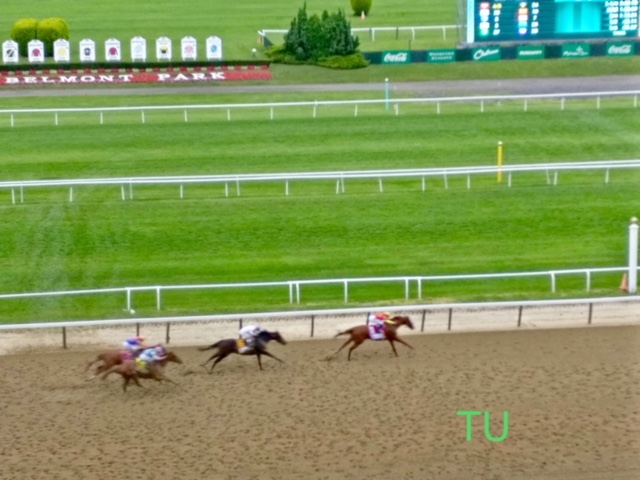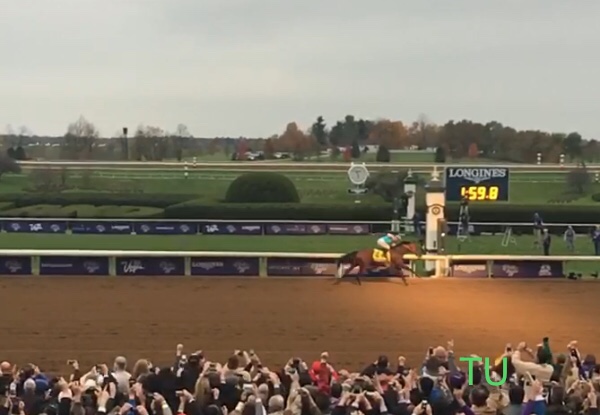
This week brought the disappointing news that no one wanted but many had already suspected. Our 13th Triple Crown winner, Justify, retired from racing. Justify achieved more than I ever would have expected but his 111 day racing career ended sooner than I anticipated. There are several more races I would have enjoyed seeing him participate in but tragically that won’t happen now. This got me to thinking, what are our assumptions about a triple crown winner? Thus, I set out to examine the triple crown trends.
The Triple Crown of thoroughbred horse racing is a relatively new concept. In 1930, when Gallant Fox won 3 classic stakes races for 3 year-old Thoroughbreds, consisting of The Kentucky Derby, The Preakness Stakes and The Belmont Stakes , the term for the series, The Triple Crown, was applied. In doing so, they also acknowledged the feat had been achieved once before, more than a decade prior, with Sir Barton, in 1919. It is such a difficult accomplishment that in almost 100 years it has only happened these 13 times. Only 4 Triple Crowns have occurred in my life time and only 2 since my toddler days. Generations of fans would agree that with so few examples it is difficult to know what is the normal expectation of a triple crown winner? What are the triple crown trends?
Here is a list with some comparable facts about our lucky 13:
- Sir Barton – won in 1919. He won all three legs of the series and an additional race, the Withers Stakes in a 32 day period during his 3 year-old campaign. He then raced 12 more times as a 4 year-old, winning 5 of those races. His 2 most famed wins at 4 years-old were the Saratoga Handicap and the Merchants and Citizens Handicap. One of Sir Barton’s most famed loses was to the legendary Man o’ War in the Kenilworth Park Gold Cup. At 5, Sir Barton, with chronic hoof problems, retired to stud. He is not considered a great sire though he produced some fine stakes winners. Sir Barton is a U.S Racing Hall of Fame and Canadian Horse Racing Hall of Fame thoroughbred.
- Gallant Fox – won in 1930. This champion stayed very busy in the months remaining after he won the triple crown. He went on to win the Dwyer Stakes, the Arlington Classic, the Lawrence Realization Stakes, the Saratoga Cup and the Jockey Gold Cup. He finished second once following his Triple Crown win, that was in the famed Travers Stakes. He did not race after his 3 year-old campaign. He was a sire for 22 years and is the father to many champs and graded stakes winners. Gallant Fox was also inducted into the U. S. Racing Hall of Fame.
- Omaha – won in 1935. In the midst of his triple crown wins he participated in the Withers Stakes, finishing 2nd, prior to the Belmont. He followed up his Belmont win just 2 weeks later with the Brooklyn Handicap, finishing 3rd. Days later he won the Dwyer Stakes and a month after, he won the Arlington Classic. He returned to race as a 4 year-old shipping off to Britain. There he won the Victor Wild Stakes and the Queen’s Plate before finishing out his career with two second place finished in the Ascot Gold Cup and the Princess of Wales’s Stakes. It was intended for him to race as a 4 year-old but he became lame. He went on to be a stallion for several years and is found in the pedigree of some stakes winners and champions. Omaha is also in the U.S. Racing Hall of Fame.
- War Admiral – won in 1937. In under a month he achieved all of his triple crown wins. As a 3 year-old he went on to race and win 3 more times. He won an allowance, the Washington Handicap and the Pimlico Special. He then raced 12 more times as a 4 year-old winning all but 2 of those races. These included the Widener Handicap, the Queens Country Handicap, the Massachusetts Handicap, the Wilson Stakes, the Saratoga Handicap, the Whitney Handicap, the Saratoga Cup, the Jockey Club Gold Cup, the Pimlico Special and the Rhode Island Handicap. The Massachusetts and Pimlico Handicap he finished 2nd and 4th respectively. At 5 he won an allowance and an injury ended his racing career. He entered into stud and became a leading sire and broodmare sire. War Admiral is in the U.S. Racing Hall of Fame.
- Whirlaway – won in 1941. In addition to his triple crown wins, he also won the Lawrence Realization Stakes, the Travers Stakes, the Saranac Handicap, the Dwyer Stakes, and the American Derby at 3. At 4 years-old he raced 18 times, winning 10 times and always no less than 3rd place. His wins at age 4 included the Clark Handicap, the Dixie Handicap, the Brooklyn Handicap, the Massachusetts Handicap, the Trenton Handicap, the Narragansett Special, the Jockey Club Gold, Washington Handicap, the Governor Bowie Handicap and the Louisiana Handicap. Afterwards, he did not race despite not entering stud until age 6. Whirlaway sired stakes winners and was elected into the U.S Racing Hall of Fame.
- Count Fleet – won in 1943. Undefeated in his third year of racing, he won the Withers Stakes before completing the triple crown series. Finally, we have evidence of a triple crown winner that retired from racing immediately following this grand achievement. Count Fleet had repeated injuries in many of his 6 starts and following his final race a leg splint took him out of training for too many months to race anymore at age 3 and his connections chose to retire him in interest of breeding. He was an excellent stud, leading sire and leading broodmare sire. Count Fleet is in the Racing Hall of Fame.
- Assault -won in 1946. He was undefeated as a 3 year-old leading into the triple crown but his 8 races following the series that year provided him with some more challenges. In 1946 he also won the Dwyer Stakes, the Pimlico Special, the and the Westchester Handicap. He came back at age 4 to race 6 times. He won the Grey Leg Handicap, the Suburban Handicap, the Brooklyn Handicap and the Butler Handicap. He then retired to stud but sired no foals. He returned to racing and at age 6, he won the Brooklyn Handicap again. He sired a couple of quarter horses in his retirement. Assault is a member of the Racing Hall of Fame.
- Citation – won in 1948. He won the triple crown series with an additional win in the Jersey Stakes along the way. He then won 7 more races at age 3, the Stars and Stripes Handicap, the American Derby, the Sysonby Mile, the Jockey Club Gold Cup, the Gold Cup, the Pimlico Special and the Tanforan Handicap. He had an osselet, arthritis that sets up in leg joint following an injury, that prevented him from racing at age 4. At age 5 he returned to racing. He won 1 of 5 races, That was the Golden Gate Mile Handicap. At age 6 he won the last 2 of his final 3 races, the American Handicap and the Hollywood Gold Cup. He sired several champs and graded stakes winners and is a Hall of Fame Thoroughbred.
- Secretariat – won in 1973. Following a long gap in winners, one of the all time favorites took the crown. He raced 6 more times at age 3. Secretariat won the Arlington Stakes, the Marlboro Cup Handicap, the Man o’ War Stakes and the Canadian International Championship Stakes. His connections, including the famed Penny Chenery, owned him as part of a syndicate arrangement that was necessary to prevent selling him earlier. The agreement did not allow him to race after age 3. Secretariat went on to be a leading broodmare sire and is in the U.S. Racing Hall of Fame, the Kentucky Athletic Hall of Fame and the Canadian Horse Racing Hall of Fame.
- Seattle Slew – won in 1977. After sweeping the crown he only raced once again at age 3. He did not win the Swaps Stakes. He returned at age 4 much improved, winning 5 of 7 races. 2 allowance races, the Marlboro Cup Handicap, the Woodward Stakes and finally the Stuyvesant Stakes were his final wins. In his retirement he was leading sire and leading broodmare sire. Seattle Slew is a Hall of Fame horse.
- Affirmed – won in 1978. Following his triple crown wins, he raced 4 more times at age 3. He won the Jim Dandy Stakes that same year. He returned to the track at age 4 for another 9 races. He won 7 including, the Charles H. Strub Stakes, the Santa Anita Handicap, the Californian Stakes, the Hollywood Gold Cup, an allowance, the Woodward Stakes and the Jockey Club Gold Cup. He did not race at age 5 but had a nice stud career. He sired many champs and graded stakes winners. Naturally, he is in the Hall of Fame.
- American Pharoah – won in 2015. He was the first horse that I can recall watching win each leg of the triple crown live. He brought me so much joy after the 37 year dry spell. Following his win he raced 3 more times winning 2 of three. He won the William Hill Haskell Invitational Stakes, finished second in the Travers Stakes and then won the Breeders’ Cup Classic to achieve the first Grand Slam! He was retired to stud with expectations of earning a fortune. His first foals were born in 2017. They are too young to race. Time will tell if he is a superior sire.
- Justify – won in 2018. He finished the triple crown series and never raced again. For some time he was resting while his connections were watching some filling in an ankle. However, when it was determined he would not heal in time to train for the Haskell, the Travers or the Breeders’ Cup Classic he retired. He will return to WinStar Farm to heal until he begins his stud career at Coolmore. His success in the breeding shed remains unknown.

In the end, I have determined there is no right way, one way, or traditional way of playing out the career of a triple crown winner. Over the course of nearly 100 years we have seen 13 different pathways and no triple crown trends. I like this result as we can look to every one of theses champions with admiration for a level of success that only the rare thoroughbred can achieve. It also leaves me excited that I can and will enjoy the rest of the racing careers for thoroughbreds age 3 and older. Most years there is not a triple crown winner in our favorite races. We can embrace the contenders of the graded stakes and Breeders’ Cup races for their own skill without the what ifs and comparisons to our latest triple crown winners. I am now ready to appreciate this summers racing and Sunday’s upcoming Haskell with a renewed open mind. There are a lot of great thoroughbreds in contention for accolades and awards that are still running. I’m ready to enjoy those races. Happy retirement to Justify!

Special thanks to Justify pictures from Andrew Collar and the featured image of American Pharoah courtesy of Kevin Foley.
Share This:

